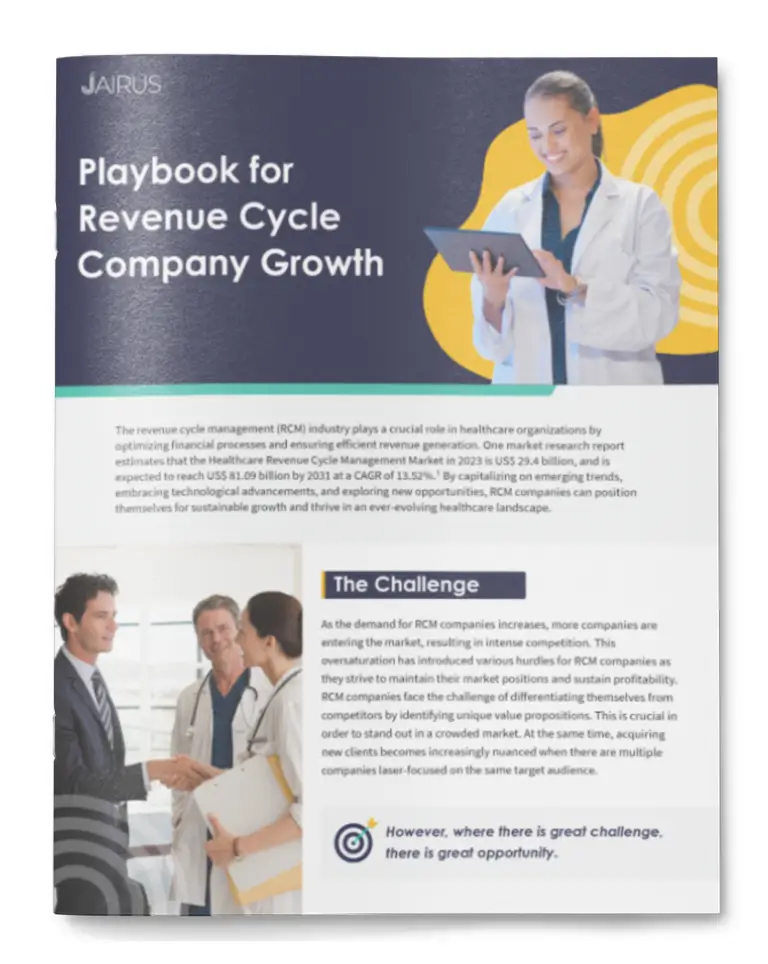Hospital margins were already razor-thin. Now, tariffs are raising the cost of everything from surgical gowns to implantable devices—and healthcare decision-makers are under even more pressure to cut spending.
As supply costs surge, hospitals are becoming more risk-averse—stalling innovation unless vendors make the financial upside impossible to ignore.
If you’re a medical device manufacturer or distributor, you’re feeling it: slower decision-making, budget freezes, and buyers who are defaulting to “no” by default. But there’s a way forward. Sharpening your financial value story can help you stand out, even when buyers are nervous to act.
Tariffs Are Changing the Game
U.S.–China trade tensions are reshaping global supply chains. Medical devices made in—or built with parts from—tariffed countries are getting more expensive quarter after quarter.
Even as some of the new tariffs face legal challenges and questions about enforceability, the uncertainty alone is causing hesitation. Hospital decision-makers aren’t just reacting to what’s official—they’re responding to the risk of future price swings, sudden changes in policy, and the fear of being stuck with costly commitments. That uncertainty is real, and it’s reshaping how—and when—they’re willing to buy.
And the impact isn’t just theoretical. Here’s what’s happening:
- Raw materials like metals and plastics are already up 10% due to tariff uncertainty.¹
- Hospitals depend heavily on imports—up to 70% of daily-use supplies in some systems come from China.
- Average hospital profit margins are just 2.2%.² One wrong supply chain bet, and margins go negative.
Even if tariffs are rolled back temporarily, the fear lingers. Buyers worry that if they commit to a vendor now, prices could spike later—and they’ll be stuck with a contract they can’t justify.
Big MedTech Brands Are Already Responding
Major manufacturers are adapting fast—and that’s telling.
Solventum is projecting an $80–100 million revenue hit from tariffs this year.³ They’re rethinking pricing, supply chain, and messaging to adapt.
Baxter International expects a $60–70 million drag and is actively exploring alternate suppliers and shipping routes.⁴
Boston Scientific forecasts a $200 million impact—but instead of shifting manufacturing, they plan to absorb the hit and make up the loss through growth and internal cost control.⁵
If these billion-dollar companies are realigning their approach, smaller players should be doing the same—especially when it comes to messaging.
What This Means for Your Sales and Marketing Strategy
When procurement teams are under pressure and hospital CFOs are saying “no” by default, your value proposition has to change. The message isn’t about features. It’s about financial reassurance.
Lead With Cost Predictability
If your product is manufactured in the U.S.—or in countries not hit by major tariffs—highlight that clearly and consistently.
In 2025, “Not Made in China” isn’t just a detail. It’s a source of confidence for the buyer. It says:
“We’re not exposed to sudden tariff spikes. Your pricing will stay stable. You won’t be stuck mid-contract if trade policy shifts again.”
That kind of safety matters now more than ever.
Speak to Labor Efficiency and Throughput
Labor now makes up 56% of hospital expenses.⁶ Solutions that help providers do more with fewer people are incredibly valuable.
If your product reduces:
- Training time
- Maintenance burden
- Workflow complexity
…you’re not just improving operations. You’re supporting staff retention and helping systems run leaner—two of the biggest financial pain points in healthcare today.
Frame your product as a workforce multiplier, not just a tool.
Tell a Clear Cost-Savings Story
Don’t expect buyers to connect the dots. Spell out the financial upside:
- Lower total cost of ownership
- Faster implementation = earlier value realization
- Reduction in labor hours or procedural steps
- Lower downtime or fewer delays
Even if your up-front cost is higher, frame your solution around net benefit—what they save in year one, year two, and beyond.
Remember: hospitals are only making purchases if the financial benefit is immediate and defensible.
Need Help Crafting That Story? Let’s Talk.
At Jairus, we help medtech companies rethink their messaging for today’s economic climate. We turn complex cost-benefit stories into simple, persuasive positioning that cuts through and drives pipeline results.
Let’s build a strategy that speaks to what your buyers care about right now: cost certainty, operational efficiency, and long-term value.
Book a discovery call now.
References
- Buchwald, E. (2025, May 18). Trump lowered tariffs on China. Here’s why that won’t spare Americans from price hikes and shortages | CNN business. CNN. https://www.cnn.com/2025/05/18/economy/china-tariffs-prices
- Kaufman Hall. (2025). National Hospital Flash Report: February 2025 Data. Kaufman Hall. https://www.kaufmanhall.com/insights/research-report/national-hospital-flash-report-february-2025-data
- Solventum. (2025). Q1 FY25 earnings presentation. https://investors.solventum.com/image/SOLV_1Q25_Earnings%20Presentation_05082025_vF.pdf
- Schencker, L. (2025). Baxter International, Deerfield-based maker of IV fluid and pharmaceuticals, expects tariff impact of $60m to $70m. Chicago Tribune. https://www.chicagotribune.com/2025/05/01/baxter-international-tariff-impact/
- Zipp, R. (2025). Boston Scientific is “very bullish” on 2025 despite $200M tariff hit. MedTech Dive. https://www.medtechdive.com/news/boston-scientific-trumo-tariffs-2025-guidance/746080/
- AHA. (2025). The Cost of Caring: Challenges Facing America’s Hospitals in 2025. American Hospital Association. (2025). https://www.aha.org/system/files/media/file/2025/04/The-Cost-of-Caring-April-2025.pdf


